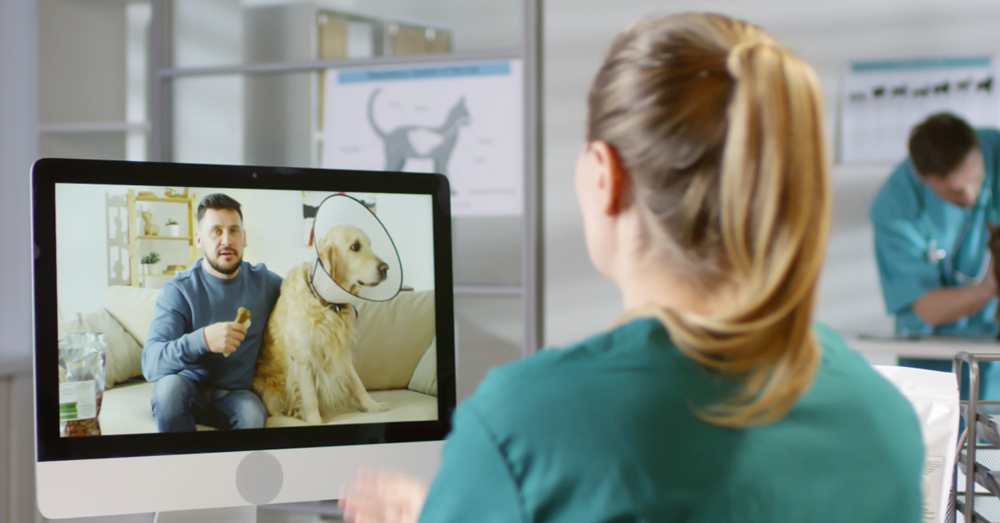Telemedicine is already widely used in human medicine, so it was only a matter of time before the veterinary industry adopted the technology. The COVID-19 pandemic accelerated the trend, disrupting the industry for a short time before allowing many veterinary practices to continue seeing patients, in line with social distancing guidelines.
Now, NaVetor makes telemedicine easy to incorporate into your existing practice, right from your veterinary software.
What is Telemedicine?
Lots of tele-terms have been used over the past year in the veterinary industry. Telemedicine is simply using technology to conduct a virtual medical exam. It’s easy to confuse telemedicine with Telehealth, a broader term that covers all use of technology to deliver care as well as health information or education, or Teleconsulting, which is using technology to consult with a veterinary specialist to gather advice on caring for a patient.
Telehealth and teleconsulting aren’t exactly new to the profession, but telemedicine — conducting a full appointment over phone or video conference rather than in the clinic — is definitely a change.
Choosing a technology
Once you’ve decided to offer telemedicine for veterinary clients and patients, the next step is choosing a technology platform to power your telemedicine. NaVetor veterinary software now contains videoconferencing technology, built right in, to make the whole process easier. With just a few clicks, you can generate a video conference link for your client and either schedule a video conference or initiate a call.
Here’s how it works:
- Create an appointment in the appointment calendar as you normally would.
- Click on the appointment again, and you’ll have the option to set up a teleconference link. When the popup box appears, make sure the email or mobile phone number fields are filled in, and click Send Link. Your client will receive a link to the teleconference, in advance of the appointment.
- When the time for the appointment arrives, check the patient in. Then click on the appointment calendar and select Start Teleconference.
All you need is a high speed internet connection and a computer, tablet, or mobile phone. And you never have to leave NaVetor to set up or conduct a telemedicine appointment.
Important Considerations for Telemedicine Visits
- Make sure you are in compliance with your state board. Regulations differ from state to state regarding whether prescriptions can be written during telemedicine appointments and whether telemedicine is allowed for a first-time appointment. It pays to make sure you are up-to-speed on the specifics for your state.
- Make sure you are updating the medical record appropriately in your software. A telemedicine visit is still an appointment, so state regulations for medical-record keeping and general industry best practices still apply. Plus, you’ll want to take advantage of all of your software’s invoicing, inventory, and reminder capabilities … which work best when the medical record is up to date.
- Make sure you are charging appropriately. Many practices charge a modest amount for a telemedicine visit reflecting the value of the visit. While you are providing a valuable and convenient service for clients at a time when in-person visits are difficult, there are limitations to what you can observe over video. And, be sure to advise your client when an in-office visit is required for a full diagnosis. Many practitioners will remove the cost of the telemedicine visit from the in-office visit cost, so the client isn’t double charged.
If you’re currently using NaVetor and would like help using the videoconferencing feature, feel free to contact support, at support@navetor.com, 833-NaVetor, or via the support chat link or “How Do I” feature in your software.
If you’d like to explore whether NaVetor is right for your practice, request a demo or contact our sales team at 877-422-8838 or sales@navetor.com.
Request a Demo
Inspired by what you’ve seen? Interested in seeing how NaVetor can work in your practice? Contact us to set up a personalized demonstration of the software.
Sales: 877-422-8838

